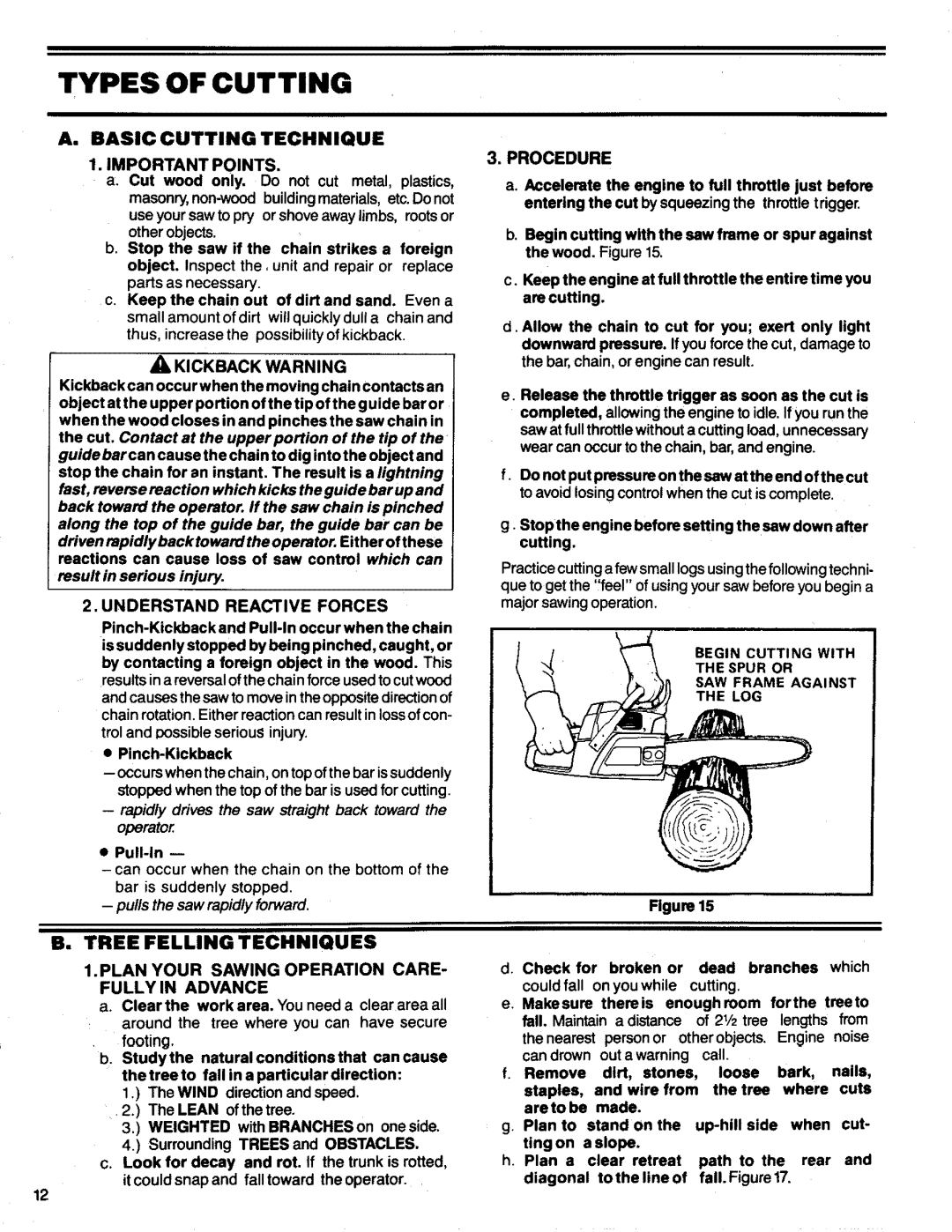3300 specifications
The Poulan 3300 chainsaw is a robust and efficient piece of equipment designed for both homeowners and professionals who require reliable performance in various cutting tasks. This model is known for its powerful engine and user-friendly features, making it a popular choice among outdoor enthusiasts and those maintaining their properties.One of the standout features of the Poulan 3300 is its engine. Powered by a 33cc two-stroke gas engine, it delivers ample power for cutting through tough materials. This engine is designed for efficiency, providing a balance between performance and fuel consumption, which allows for longer operation times between refuels. The engine is also lightweight, enhancing maneuverability during prolonged use.
The Poulan 3300 comes equipped with a 16-inch guide bar, providing versatility in cutting different sizes of wood. The bar length is ideal for most home and garden tasks, including trimming branches, felling small trees, and cutting firewood. The chain is designed for quick and efficient cuts, contributing to the overall ease of use.
In terms of technology, the Poulan 3300 features an automatic oiling system that ensures the chain remains well-lubricated during operation. This not only improves cutting efficiency but also extends the life of the chain and guide bar. The easy-access chain tensioning system allows users to adjust the tension of the chain quickly without the need for additional tools, which is a significant convenience during operation.
Safety is a paramount consideration in chainsaw design, and the Poulan 3300 incorporates several safety features. It includes a chain brake that stops the chain immediately in case of kickback, along with a throttle lockout to prevent accidental starts. These features ensure that users can operate the chainsaw with confidence.
Additionally, the Poulan 3300 is designed with ergonomic considerations in mind. The handle is shaped for comfort, reducing fatigue during extended use. The lightweight construction of the chainsaw further enhances user comfort, making it easier to handle for long periods.
Overall, the Poulan 3300 chainsaw combines power, performance, and user-friendly features, making it an excellent choice for a variety of cutting tasks. Whether for light home use or more demanding applications, this chainsaw delivers consistent results and durability. Its thoughtful design and advanced technologies make it a reliable tool for anyone looking to tackle outdoor projects effectively.

